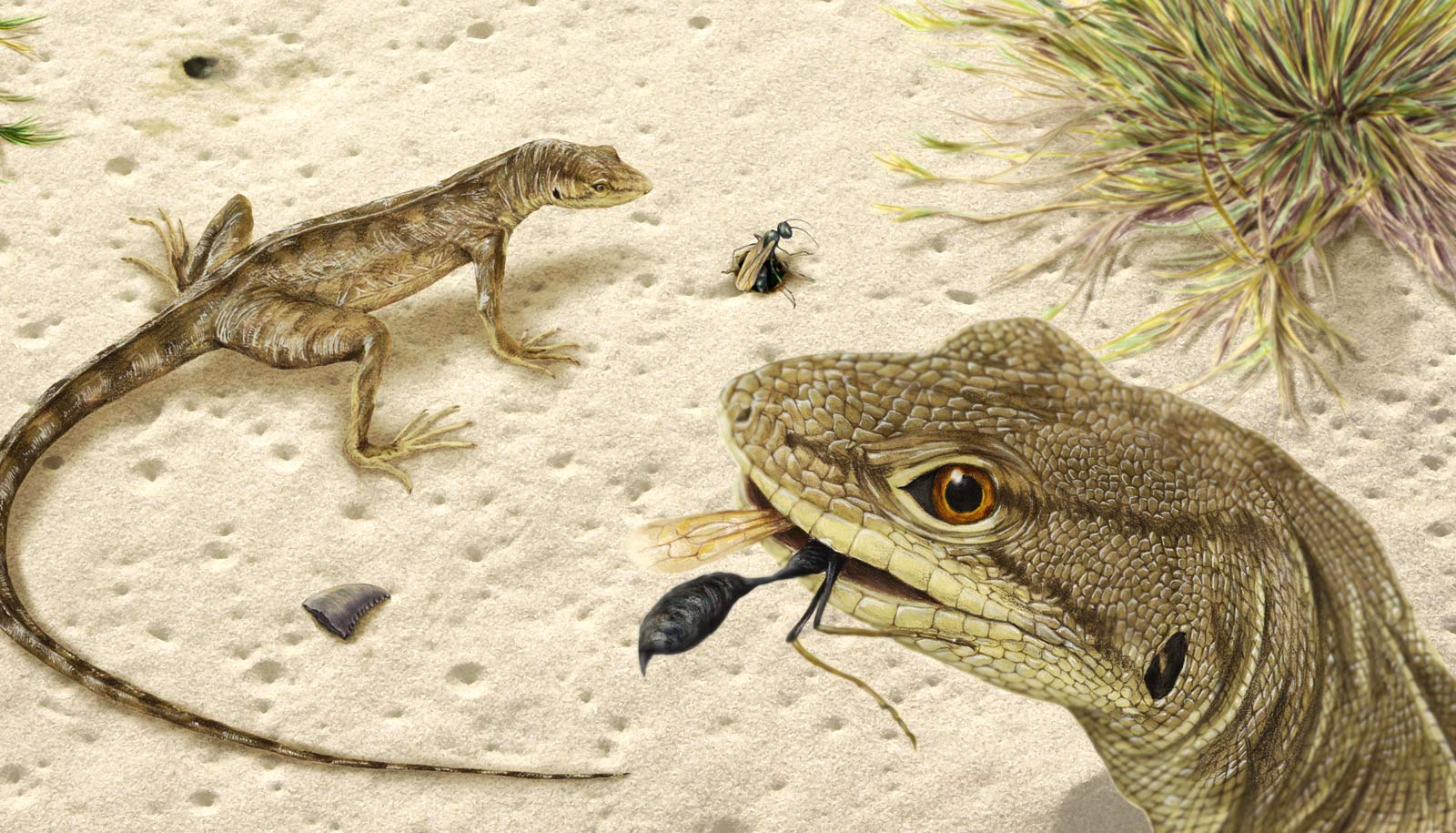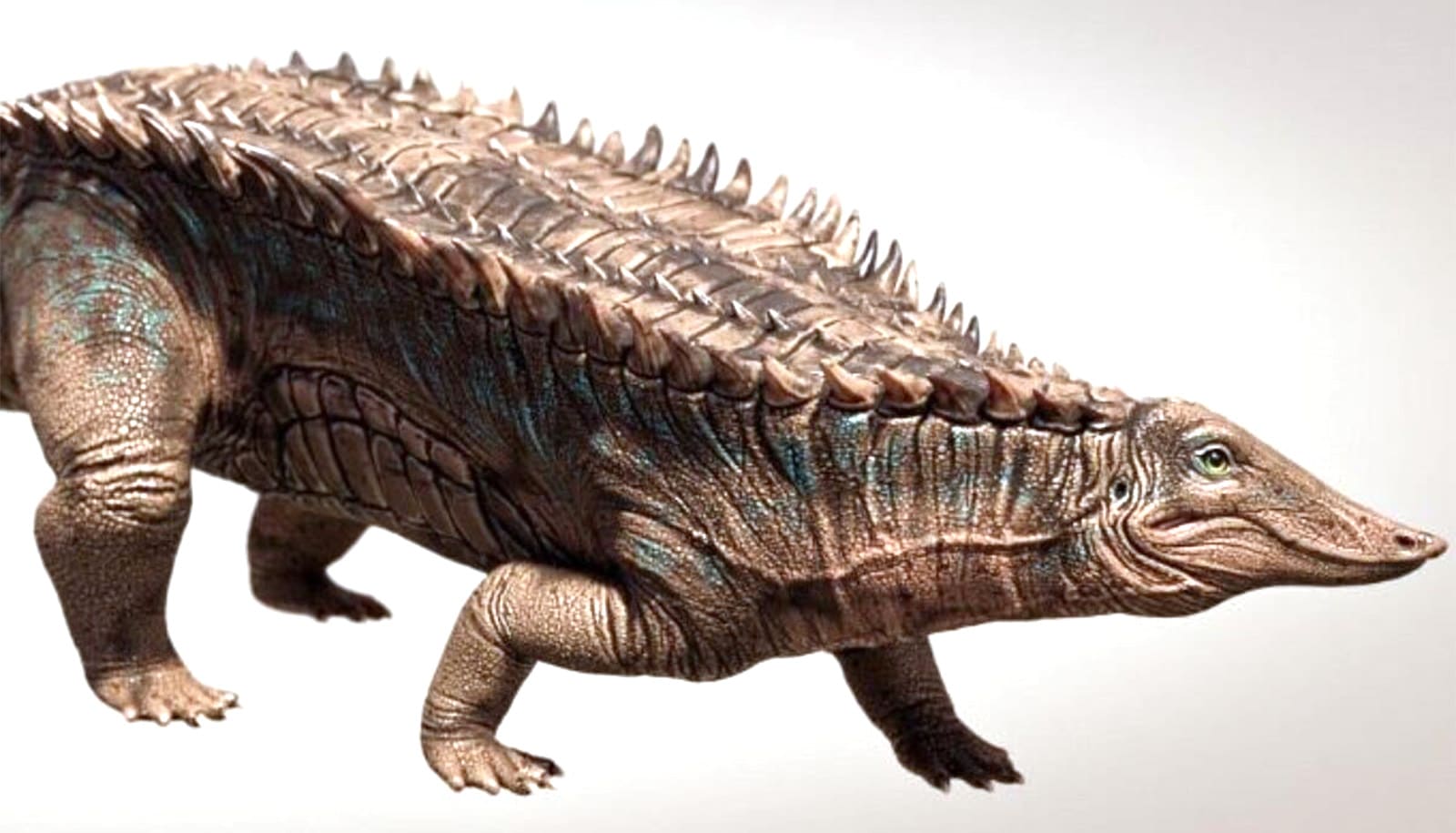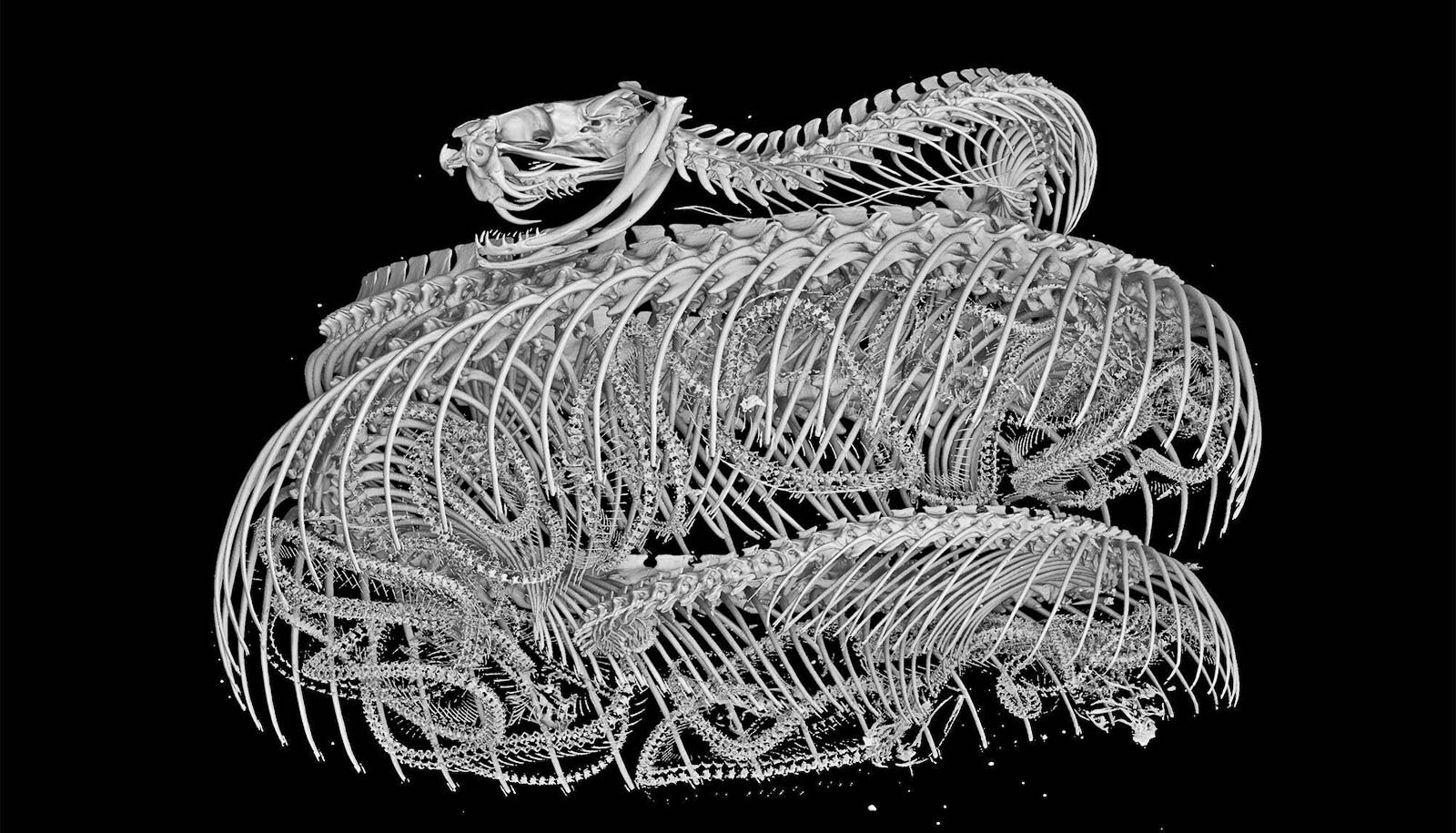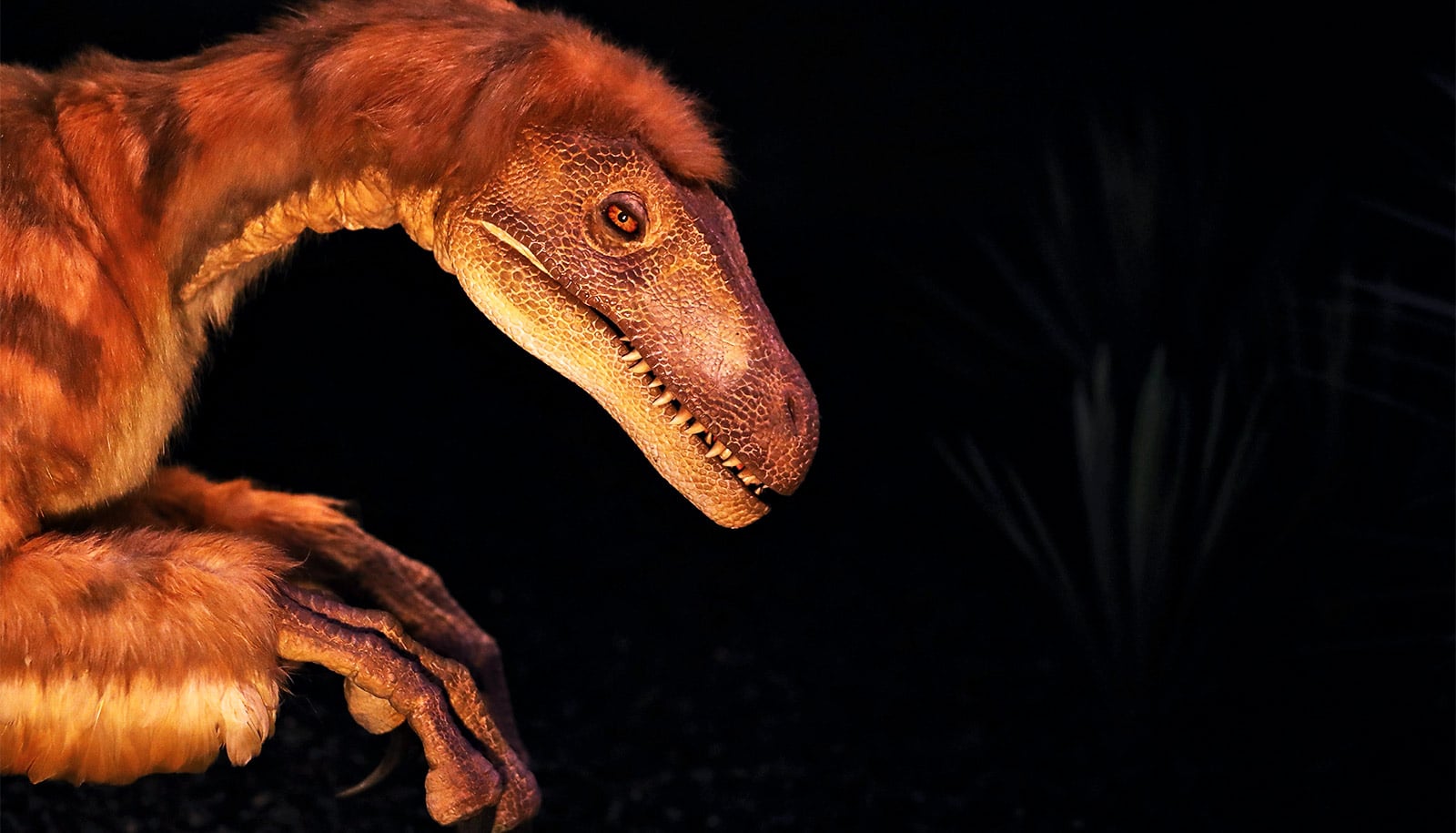Paleontologists picking through a bounty of fossils from Montana have discovered something unexpected—a new species of lizard from the late dinosaur era, whose closest relatives roamed in faraway Asia.
They say the ancient lizard, which lived 75 million years ago in a dinosaur nesting site, fills in significant gaps in our understanding of how lizards evolved and spread during the dinosaur era.
“It is incredibly rare to find one complete fossil skeleton from a relatively small creature like this lizard,” says lead author David DeMar, a postdoctoral research associate in the University of Washington’s biology department and the Burke Museum of Natural History & Culture. “But, in fact, we had two specimens, both from the same site at Egg Mountain in Montana.”
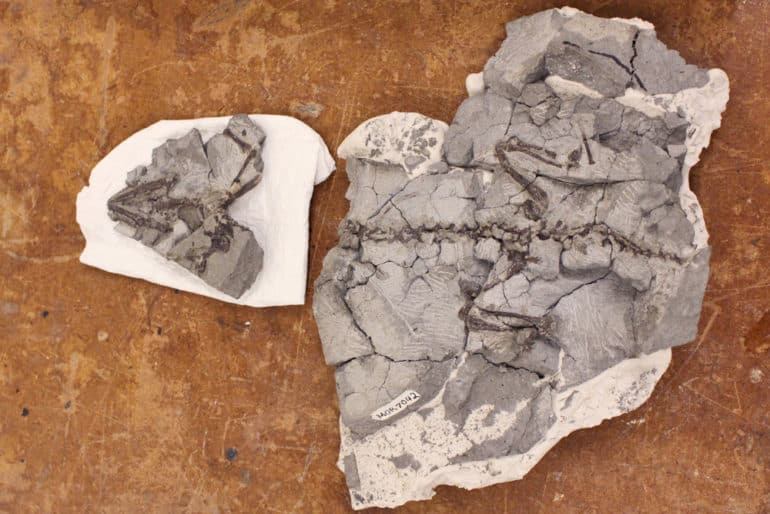
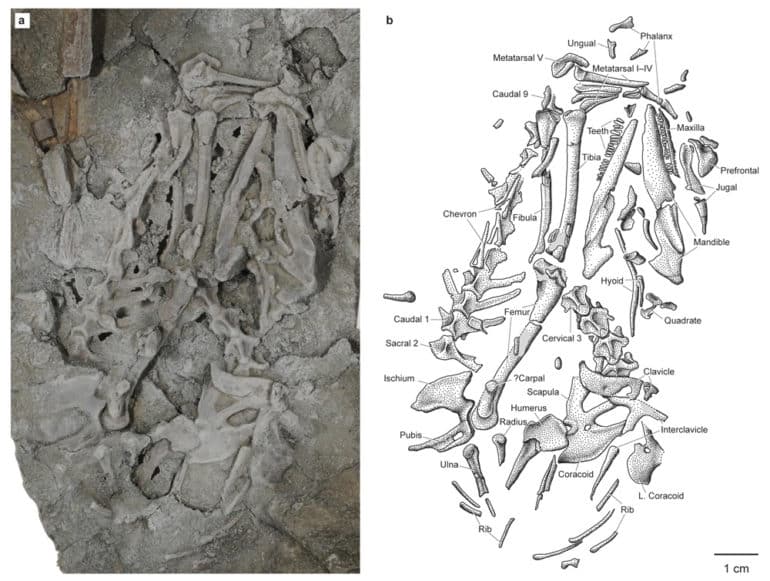
Right out of the gate, the new species—dubbed Magnuviator ovimonsensis—is reshaping how scientists view lizards, their biodiversity, and their role in complex ecosystems during this reptile’s carefree days in the Cretaceous Period 75 million years ago. The findings appear in the Proceedings of the Royal Society B.
Distant relative
Based on analyses of the nearly complete fossil skeletons, Magnuviator was an ancient offshoot of iguanian lizards—and they’re actually the oldest, most complete iguanian fossils from the Americas.
Today, iguanians include chameleons of the Old World, iguanas, and anoles in the American tropics, and even the infamous water-walking basilisk—or “Jesus Christ”—lizards.
But based on its anatomy, Magnuviator was at best a distant relative of these modern lizard families, most of which did not arise until after the non-avian dinosaurs—and quite a few lizards and other creatures—went extinct 66 million years ago.
Researchers came to these conclusions after meticulous study of both Egg Mountain specimens over four years. This included a round of CT scans at Seattle Children’s Hospital to narrow down the fossil’s location within a larger section of rock and a second round at the American Museum of Natural History to digitally reconstruct the skull anatomy.
Ancient ocean quirk left us these bizarre fossils
The fact that both skeletons were nearly complete allowed them to determine not only that Magnuviator represented an entirely new species, but also that its closest kin weren’t other fossil lizards from the Americas. Instead, it showed striking similarities to other Cretaceous Period iguanians from Mongolia.
“These ancient lineages are not the iguanian lizards which dominate parts of the Americas today, such as anoles and horned lizards,” DeMar says. “So discoveries like Magnuviator give us a rare glimpse into the types of ‘stem’ lizards that were present before the extinction of the dinosaurs.”
Dinosaur hotspot
Egg Mountain is already famous among fossil hunters. Over 30 years ago, paleontologists discovered the first fossil remains of dinosaur babies there, and it is also one of the first sites in North America where dinosaur eggs were discovered.
“We now recognize Egg Mountain as a unique site for understanding Cretaceous Period ecosystems in North America,” says senior author Greg Wilson, associate professor of biology and curator of paleontology at the Burke Museum. “We believe both carnivorous and herbivorous dinosaurs came to this site repeatedly to nest, and in the process of excavating this site we are learning more and more about other creatures who lived and died there.”
The team even named their new find as homage to its famous home and its close lizard relatives in Asia. Magnuviator ovimonsensis means “mighty traveler from Egg Mountain.”
Through excavations at Egg Mountain led by coauthor David Varricchio at Montana State University and meticulous analysis of fossils, scientists are piecing together the Egg Mountain ecosystem of 75 million years ago. In those days, Egg Mountain was a semi-arid environment, with little or no water at the surface. Dinosaurs like the duck-billed hadrosaurs and the birdlike, carnivorous Troodon nested there.
More fossils point to ‘engineers’ for mass extinction
Researchers have also unearthed fossilized mammals at Egg Mountain, which are being studied by Wilson’s group, as well as wasp pupae cases and pollen grains from plants adapted for dry environments. Based on the structure of Magnuviator’s teeth, as well as the eating habits of some lizards today, the researchers believe that it could have feasted on wasps at the Egg Mountain site. Though based on its relatively large size for a lizard—about 14 inches in length—Magnuviator could have also eaten something entirely different.
“Due to the significant metabolic requirements to digest plant material, only lizards above a certain body size can eat plants, and Magnuviator definitely falls within that size range,” DeMar says.
Whatever its diet, Magnuviator and its relatives in Mongolia did not make it into the modern era. The scientists hypothesize that these stem lineages of lizards may have gone extinct along with the non-avian dinosaurs. But given the spotty record for lizards in the fossil record, it will take more Magnuviator-level discoveries to resolve this debate. And, unfortunately, part of the excitement surrounding Magnuviator is that it is a rare find.
Other coauthors are the late Jack Conrad of the New York Institute of Technology and the American Museum of Natural History and Jason Head of the University of Cambridge. The National Science Foundation and the American Museum of Natural History funded the work.
Source: University of Washington
